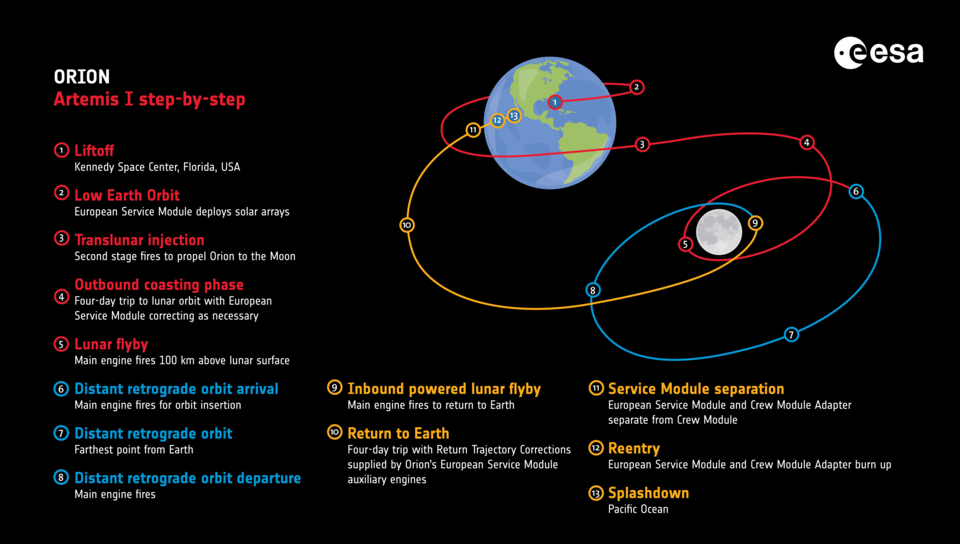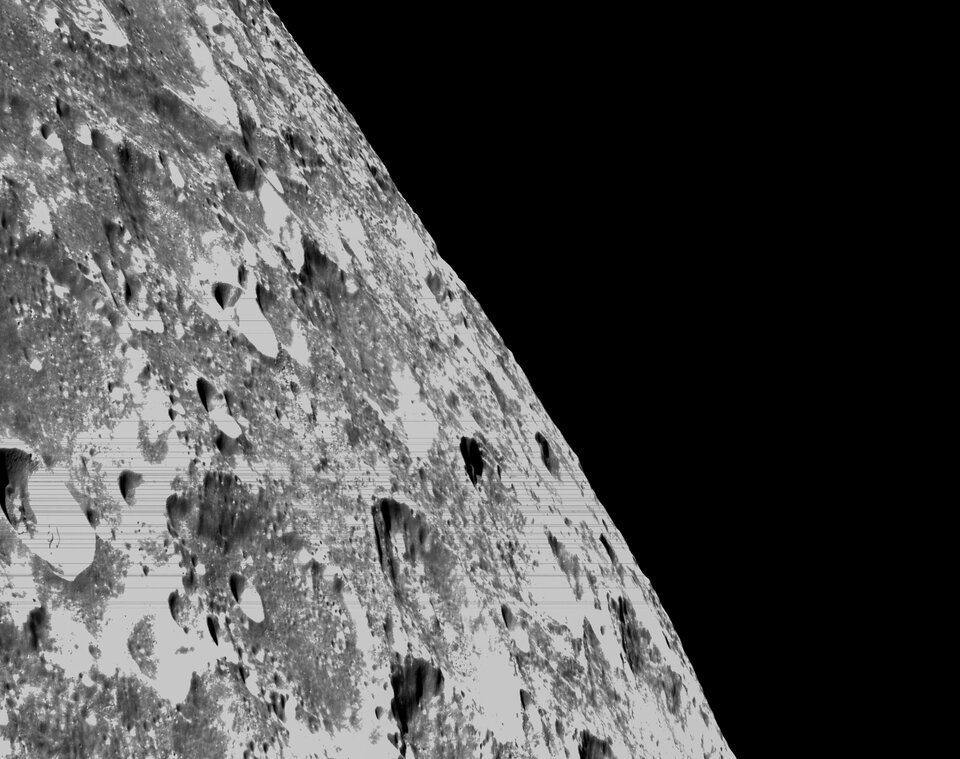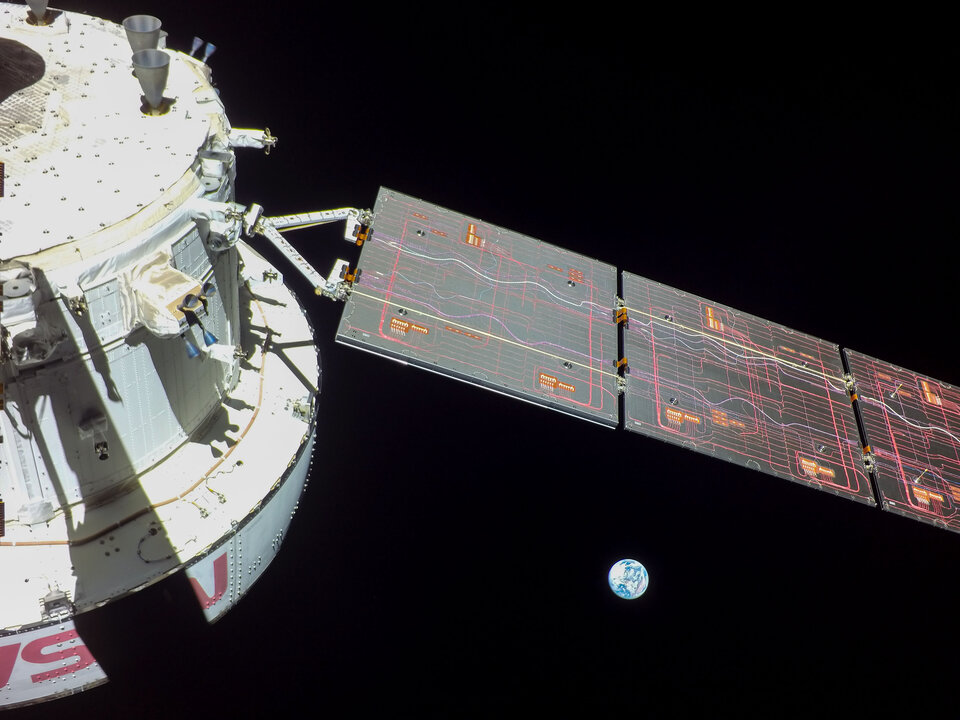Yesterday at 17:43 CET (16:43 GMT) the European Service Module for Orion fired its main engine at less than 127 km from the Moon’s surface to put the Artemis spacecraft on a collision course with Earth.
Over the last 20 days in space, Orion has ventured farther from Earth than any human-rated spacecraft ever before, and the Artemis spacecraft is now truly on its way home.

The return powered flyby burn was the longest and most powerful thruster firing the European Service Module has completed, and the last big burn before the end of the Artemis I mission.
The European Service Module has 33 engines that control and power Orion around the Moon and through deep space. The module also provides electricity, fuel and climate and temperature control for the spacecraft.

“Orion and the European Service Module have been exceeding expectations from the start,” says ESA’s mission manager Philippe Deloo,” the four solar array wings have been producing 15% more power while we are consuming less electricity due to the spacecraft fluctuating less in temperature than expected.
“There are some minor issues that are common for a first test flight and Orion is designed to the highest human-rated specifications with fail-safes and backups. Thanks to the engineering and hard work of the flight control teams at NASA’s Johnson Space Center and ESA’s mission evaluation room in ESTEC, the Netherlands, the Artemis I mission has been a smooth operation so far.”
Far side of the Moon

The largest burn in the Artemis mission occurred when Orion was flying behind the Moon and was out of contact with ground control. The three minute and 26 second firing accelerated Orion by 1054 km/h, using the Moon’s gravity to slingshot back to Earth.
The spacecraft spent half an hour without being able to phone home as the Moon blocked all signals with Earth. The European Service Modules for Orion evolved from ESA’s Automated Transfer Vehicles that flew autonomously to the International Space Station. As such Orion is more than equipped to fly on its own if necessary. ESA is working on project Moonlight to create satellite navigation and communications coverage around the Moon that will reduce or avoid completely this loss of signals.
Return home
Orion is now well and truly on its way back home. The Artemis I mission will test a reentry and splashdown at speeds never attempted before so the return powered flyby has set the spacecraft up for an intense splashdown in the Pacific Ocean which will see Orion enter our atmosphere at speeds of 39 590 km/h, 30 percent faster than an International Space Station return, and 24 times faster than a speeding bullet.

The European Service Module has just three minor orbit corrections planned in the next six days cruise to Earth. Less than an hour before splashdown on 11 December, Orion and the European Service Module and Crew Module Adapter separate with the Orion crew capsule returning to Earth, the European Service Module and Crew Module Adapter burn up harmlessly in the atmosphere, their mission complete having taken Orion beyond the Moon and back.

 Automated Transfer Vehicle page
Automated Transfer Vehicle page ATV blog archive
ATV blog archive
Discussion: one comment
Thank-you for all this info!
It’s amazing!